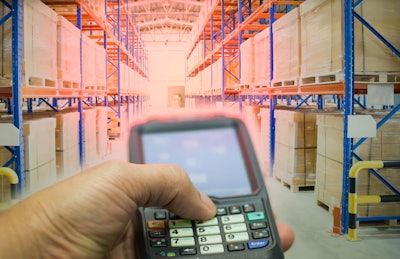
The shipping industry loses trillions of dollars in shipping damage every year due to mishandling during transport. Something as simple as a bump in the road can cause big problems in the supply chain. In addition to damage, consider the supply chain shortages that several industries have seen in the last two years. With many struggling to get items in stock, shipped and delivered in a timely manner, there’s very little room for error or deviations. Understanding the value of rehabilitating a successful supply chain, it’s now more important than ever before that organizations minimize product loss.
Supply chain damage
Supply chain damage isn’t a new occurrence. It can, and does, occur in every industry, whether the products being shipped are medical devices, electronics, appliances, building materials or other items. Companies have been trying to find ways to reduce it for years and have been successful to a certain extent. To not only understand when damage is occurring, but also where it is occurring, many companies implement condition-monitoring devices, more specifically, impact-monitoring devices. Major damage is often noticeable, causing visible changes to a box or packaging. Some damage, however, without proper inspection, can go unnoticed from place to place, getting worse in the process and eventually causing bigger problems. Impact-monitoring devices typically work by alerting handlers to damage with visual cues, like a color-changing indicator. These color-changing indicators allow product handlers to check at each handoff if a potentially damaging impact was experienced by the shipment. However, one downside is that the information from these sensors is not always communicated throughout the supply chain so finding patterns and the root cause of issues is difficult. What can be more helpful for companies, beyond a single-use visual indicator, is a cohesive monitoring program.
RFID in the supply chain
Already, many companies utilize radio-frequency identification (RFID) readers to manage the inventory going in and out of their warehouses. Historically, it’s been a helpful tool to keep track of items as they move from place to place. RFID devices help identify an item as it passes through a reader, collect data and automatically store it in the warehouse’s preferred system, enabling manufacturers and distributors to track and monitor the product in real time regardless of its location. What used to require manual intervention can now be accomplished by simply implementing an RFID reader. While mishandling may still occur, the system alerts users and creates a permanent, irrefutable record. However, while good for identifying and logging an unalterable record of an item’s whereabouts, RFID tags alone don’t account for an item’s condition, which is why impact-monitoring devices are also necessary.
Combining RFID with impact-monitoring
Combining RFID tracking with impact-monitoring capabilities creates a comprehensive system for detecting, diagnosing, and deterring damage in the supply chain. Leveraging all the features that both have to offer, this kind of device redefines inventory management. Instead of simply identifying inventory as it passes through a supply chain checkpoint, impact-monitoring-equipped RFID automatically spots and differentiates which items require damage inspection and which are approved to continue through the supply chain.
Visual cues alert a handler of damage after receiving a shipment, but handlers are still required to report the damage, putting them in control of the data. This opens the process up to the possibility of human error, which means it could be reported incorrectly, or not at all, making it hard to spot potential trends and assign appropriate responsibility. The data recorded by RFID readers every time they read a tag gives a clear view of when and where a package was damaged, and by which handler. Linking this data directly into a warehouse management system (WMS), visual cues are no longer necessary. Thousands of tags can be read and evaluated for impact threshold deviations within seconds, eliminating the need for human intervention and allowing human labor to be optimized elsewhere.
These types of devices, like SpotSee’s ShockWatch RFID indicator, provide all the benefits of an impact-monitoring and inventory management program. When left unaddressed, supply chain damage can have long-term effects on a company, both economically and reputationally. When items are continuously damaged, they require replacement, which means expending additional resources. This might include additional labor and the costs associated, a loss in profit if an item requires complete replacement and costs associated with a disruption in the supply chain process. Additionally, an uptick in returns could be damaging to a company’s reputation, reducing the number of purchases and transactions, which can drive down revenue.
Recently, supply chains have undergone significant changes to adjust for labor and product shortages, evolving needs and more. With companies under a microscope, now is the time to consider programs that enable end-to-end visibility and quick decision making. Asset management is a huge part of supply chain success. As such, implementing a cohesive solution that covers each part of the asset from location to condition can help mitigate damage, reduce costs, minimize product loss and get organizations back to optimized operations and efficient supply chains.




















